How To Teach Spelling: Unlocking the Power of Sounds, Meaning & Letters

By KELLIE
Research in the Science of Reading shows that spelling instruction is most effective when it explicitly connects sounds, letters, and meaning. When teachers understand these connections, spelling instruction transforms from memory exercises to a pathway to deeper reading and writing success. Understanding how this connection works begins with exploring the three essential types of word knowledge that help explain how English spelling works.
How we teach spelling is currently a hot topic and undergoing rapid transformation. We are re-examining the ‘tried and true’ methods of spelling instruction through the lens of the Science of Reading research bank.
At the heart of this change is a clearer understanding of ‘how words work’ and how students learn to spell them. Research is showing that successful spelling depends on students being able to coordinate three kinds of word knowledge at the same time. Those three knowledges are:
- how a word sounds (phonology),
- how it is written (orthography), and
- what it means (morphology).

“At the heart of this change is a clearer understanding of how words work and how students learn to spell them.”
Understanding 'Triple Word Form Theory' (TWFT) to teach spelling.
Current research shows that skilled spellers draw on these three interrelated types of word knowledges which develop together as we learn to spell. Because these forms of knowledge work in tandem, effective spelling instruction requires teaching them together rather than in isolation (State of New South Wales – Department of Education, 2023).
This evidence-based instruction is explained through the Triple Word Form Theory (Garcia et al., 2010; Daffern, 2017). This model describes how spellers coordinate sounds, letter patterns and meanings as they learn to spell accurately.
When students understand how sounds, spelling patterns and meanings connect, ‘spelling’ makes sense. This ultimately helps them to spell, write and read. It also provides teachers a reliable framework for how to best teach spelling that is grounded in research.
Unfamiliar terms like phonology, orthography and morphology are used regularly when talking about spelling. Understanding what each of these means helps teachers explain to students how English spelling works. Importantly too, this understanding enables us to use a shared metalanguage to talk about spelling, and how it connects to reading and writing, in a clear and consistent way with our students.
Phonological features of words: hearing the sounds in words
The first layer of spelling knowledge is phonological. Phonology refers to the way a word sounds when spoken. It is a word’s sequence of speech sounds (phonemes).
Some basic phonological skills are foundational to learning to spell. The ability to blend, segment, substitute and delete phonemes, as well as developing knowledge of letter-sound correspondences is essential.
Students need to hear the individual sounds in spoken words and blend or segment them accurately. In the word help, they must detect four sounds (/h/, /e/, /l/ and /p/) before they can represent them with letters.
Strong phonological knowledge lets students hold a word in working memory and match each sound to letters. While explicit teaching of phonemic awareness and phonics leads to more accurate reading and spelling, sound awareness alone cannot explain all words. Think about words like rain and reign or sign and signature. To understand why some words look different but sound the same, or how other words are related by meaning, students need more than sound cues.

It can be difficult for some students to ‘hold’ onto all the individual sounds in longer, more complex words in their short term memory.
When we teach spelling, we can use a reliable process like this to support them. Help students manage representing the phonemes (sounds) in words by breaking the word into syllables. Use vowel sounds, rather than vowels, to identify where each word will ‘split’. This is especially helpful if the word has a ‘schwa’ sound.
This four-step process embeds multiple opportunities for students to hear and say the word.
Orthographic features of words: recognising letter patterns
The orthographic layer deals with how letters are organised in English. It involves knowledge of which letters represent the sounds. It also requires understanding the letter patterns and sequences in words and being aware of spelling generalisations. English spelling follows agreed conventions that we can usually rely on.
For instance, for students to write the word ‘have’, they identify the final sound /v/ and recall that English words rarely end with v alone. Their orthographic knowledge tells them to add an e to spell the word correctly. (There is an interesting lesson in the history behind this convention which deserves a blog of its own!)
Research also tells us that orthographic knowledge does not develop automatically through exposure. Daffern’s research (2017) found students generally master basic phonics but often struggle with things like positional rules and vowel patterns in words. This understanding relies on teachers explicitly teaching students how patterns operate within words. Orthographic teaching builds the “visual map” of English. This allows us to recognise words and produce them quickly and accurately.
Effective spelling instruction should involve explicit teaching of the spelling rules and generalisations that apply to standard English. Teachers should use metalanguage and explicit modelling to help students understand why certain spelling patterns occur and how to apply them.
This includes demonstrating and clearly explaining generalisations, and any exceptions.

Morphological features: understanding meaning within words
The third layer, morphology, focuses on the meaning structure of words. English spelling often reflects morphemes, the smallest units of meaning, rather than just sound. Morphemes combine to form new words and include bases, prefixes, and suffixes such as help, un- and -ful.
This knowledge is the icing on the cake when it comes to spelling instruction. When students see that help, helpful and unhelpful share a base, they can use that knowledge to not only spell new words but to work out their meaning.
Morphological awareness also supports vocabulary and comprehension. It helps students to unpack unfamiliar and increasingly complex words. But this is not a knowledge reserved for older students! Students in the early years can begin exploring morphemes through direct instruction (Daffern 2021). From about Year 3 onward, morphological knowledge becomes a major driver of reading and writing development.
Graphic organisers you already use in word study lessons can be easily adapted so that students explore words through all three word forms. This is a great starting point if you want to make quick, meaningful changes.
This example shows an extended Word Matrix. Students investigate how many words they can build from the base word help using prefixes and suffixes (a).
As they record each new word, they identify the individual phonemes (b) and use their understanding of prefixes and suffixes to explore its meaning.
To complete the word study, students note any insights, reflections, or observations about spelling patterns or generalisations (c).
You can download a blank copy of the extended Word Matrix beneath the image.
How do the three work together when we teach spelling?
To help understand how they work together, let’s look at the example above in practice.
When a student writes the word unhelpful, they must:
- Hear the individual sounds (/u/ /n/ /h/ /e/ /l/ /p/ /f/ /u/ l/).
- Know which letter patterns represent those sounds (un, help, ful)
- Recognise that help is the base word, know that un changes meaning to its opposite and that ful turns a verb into an adjective.
If one part of this process is weak, the word may be misspelled or misunderstood. Phonology, orthography and morphology are therefore not separate teaching sequences but mutually reinforcing systems.
Does it really matter if we teach them together?
This new understanding might challenge some old ways of thinking. After all, we’ve long believed that the best progression is phonics in the early years, followed by morphology later. Many spelling programs have even separated sound from meaning. But research now gives a clear answer: students benefit most when all three word forms (phonological, orthographic and morphological) are taught together.
Students who integrate all three forms develop stronger spelling, reading and writing outcomes than those who learn them in isolation (Daffern, 2017). Berninger and colleagues found that spelling growth actually depends on the coordinated processing of sounds, letters and meanings. These systems work together whenever a student reads or writes a word, so teaching them in combination reflects how the brain naturally manages written language.
Each form supports and strengthens the others. As teachers, we need to remember that:
Phonological awareness helps students encode sounds.
Orthographic knowledge gives them accurate letter patterns.
Morphological understanding connects spelling to meaning.
Together they create what cognitive scientist Charles Perfetti calls lexical quality: a mental representation of a word that is precise in its sound, spelling and meaning. Words stored with high lexical quality are recognised faster, read more fluently and spelled with greater accuracy.
And as teachers of spelling, isn’t this exactly what we’re aiming to achieve?
We’ve collated 38 Essential Vocabulary Spelling Glossary word wall cards for classroom use and to ensure a consistent language when talking about spelling.
Designed to be used as a wall display to define and explain the essential metalanguage of spelling. Each card includes a clear, student-friendly definition. Icons represent each of the word knowledges. It is perfect for linking with your daily spelling, morphology, or phonics routines.
What's next in the Teaching Spelling series?
In an upcoming part 2 of this blog series, we will examine what the teaching of spelling using phonology, orthography and morphology looks like in a classroom. We will also explore how you can look closely at student’s misspelled words using the three forms to understand their spelling attempts.
We will bring the theory into daily practice to help support you to make those small shifts towards the most effective spelling instruction.
Be sure to follow us on Facebook or Instagram so we can keep you up to date!
If you missed the first blog in this series, you can read it here. Teaching Spelling: 5 small changes for big impact. This blog certainly struck a chord with teachers and clocked up over 10 000 views on Facebook during the first few days it was shared. Pie Corbett, the highly respected author of “Talk for Writing” commented on how this “excellent article” included two elements often missing from the discussion around how to improve instruction. With so much interest it certainly shows that you are not alone as you work towards ensuring how best to teach spelling! This blog is a very good starting point.
If you’d like to join some like-minded teachers to discuss the blog, or how to teach spelling, or anything related to teaching writing, you are warmly invited to join our Facebook group “The Lounge”.
Just follow the link and answer the three questions and… you’re in!
References
Berninger, V. W., Abbott, R. D., Nagy, W., & Carlisle, J. (2010). Growth in phonological, orthographic, and morphological awareness in grades 1 to 6. Journal of Psycholinguistic Research, 39(2), 141–163. https://doi.org/10.1007/s10936-009-9130-6
Daffern, T. (2017). Linguistic skills involved in learning to spell: An Australian study. Language and Education, 31(4), 307–329. https://doi.org/10.1080/09500782.2017.1296855
Daffern, T. (2021). Exploring Australian students’ spelling skills. Oxford University Press. https://www.oup.com.au/__data/assets/pdf_file/0018/183006/PRIM_Oxford_Spelling_Paper_2021_DIGITAL-1.pdf
Garcia, N., Abbott, R. D., & Berninger, V. W. (2010). Predicting poor, average, and superior spellers in grades 1 to 6 from phonological, orthographic, and morphological spelling or reading composites. Written Language and Literacy, 13(1), 61–98. https://doi.org/10.1075/wll.13.1.03gar
NSW Department of Education. (2023). Spelling diagnostic assessment. https://education.nsw.gov.au/teaching-and-learning/curriculum/literacy-and-numeracy/assessment-resources/spelling
NSW Department of Education. (2023, December). English – Stage 2 Instructional sequence: Spelling. https://education.nsw.gov.au/content/dam/main-education/en/home/teaching-and-learning/curriculum/english/documents/english-s2-spelling-instructional-sequence.pdf
Perfetti, C. A. (2007). Reading ability: Lexical quality to comprehension. Scientific Studies of Reading, 11(4), 357–383. https://doi.org/10.1080/10888430701530730



